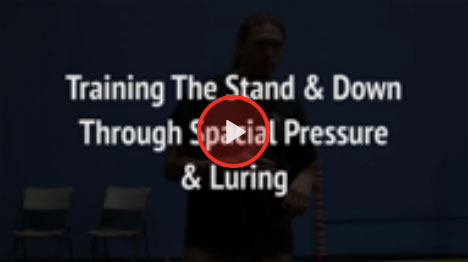Learned Helplessness vs. All-Positive Dog Training

When you are around dog training long enough, like I have been, you are going to be exposed to several different training systems or methods. In my opinion, Learned Helplessness and All-Positive dog training concepts are at opposite ends of the training spectrum and both are equally bad dog training.
The all-positive dog trainers don't believe in any form of corrections. These are well-intentioned people who lack dog training experience. On the other end of the spectrum are the people who constantly correct the snot out of their dogs until the dog develops "Learned Helplessness" (LH). These are not well-intentioned people. I have names for people who do this, and Cindy doesn't want me to put those names in writing.
All-positive trainers point to SeaWorld and the methods used to train killer whales and dolphins to justify their training methods. What these people don't know (or don't talk about) is what happens when the all-positive methods fall apart and stop working.
The video below was taken a few years ago at Sea World. It's a perfect example of what happens when all-positive training falls apart. It is a video of a Pelican landing in the killer whale pool. The distraction of the Pelican in their pool resulted in the killer whales completely ignoring commands from their trainers. The trainers lose complete control and must shut down the show.
If you spend enough time around dog parks, you will see similar scenarios. By that, I mean you will see "all-positive, no-force trained dogs" become so distracted by other dogs they refuse to listen to their owners.
Unfortunately, this often leads to dog fights.
At the other end of the training spectrum are people who, in my opinion, should not own dogs, much less be allowed to train dogs. These are people who put so much unwarranted pressure on their dogs that the dogs develop a syndrome called "Learned Helplessness" (LH).
LH occurs when an animal cannot escape or avoid repeated painful or otherwise unwarranted aversive corrections. Dogs get to a point where they simply accept the abuse and believe there is nothing they do that will stop what's happening to them. They feel they have lost total control and at that point, they stop learning.
LH causes depression and health problems.
LH can be reversed with the right type of motivational training. We see this when shelter dogs, that have been badly abused, go into a home where the new owner uses motivational methods.
Back in 1960, when I first started to learn how to train dogs, the only game in town was called "avoidance training". Back then, there was no such thing as purely positive dog training.
Avoidance training means we taught our dogs they could avoid a correction by offering a specific behavior. It was fast and effective. But the key to making it work was to have perfect timing and only use levels of corrections that resulted in a behavior change.
New dog trainers rarely ever have perfect timing and it takes time and training to learn how to control levels of corrections. Unfortunately, bad avoidance training can turn into LH.
Today, we use positive training methods to teach new behaviors. Once our dogs have learned these behaviors, we then introduce distractions to show our dogs that we expect them to follow directions all the time, no matter what distraction they face. When our dog refuses to follow our commands, they get a correction that is strong enough to result in a behavior change.
This is called "Balanced Dog Training".
When we wanted to teach our dog to heel, we would walk down the field and make a left or right 90-degree turn at the same time we popped the leash. It doesn't take a dog many reps to figure out if they paid attention, they could recognize when we were going to make a turn, and if they stuck with us, they could avoid the correction - hence the term "avoidance training".
Over the years, I have been witness to too many cases of LH. It's difficult to watch and gives good dog training a bad look.
We see this manifesting itself in bans on Remote Collars in places like California. The use of remote collars, when used correctly, is one of the most humane methods of dog training. When we use a remote, it's often at a level that a human can't feel. I compare it to tapping our dog on the shoulder and telling it to pay attention.
In the end, we all need to figure out what kind of trainer we want to be and how we want to train our dogs. I like to think that the more experience a person has, the better decisions they make. Unfortunately, that's not always true.
If you would like to learn more about our position on the problems with all-positive dog training, I would recommend listening to my podcast on The Problem with All-Positive Dog Training. It is a short podcast on an article I wrote a few years ago on the subject.











Ask Cindy.